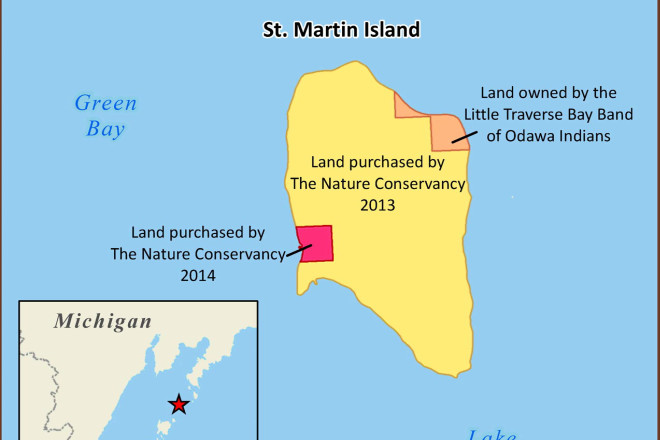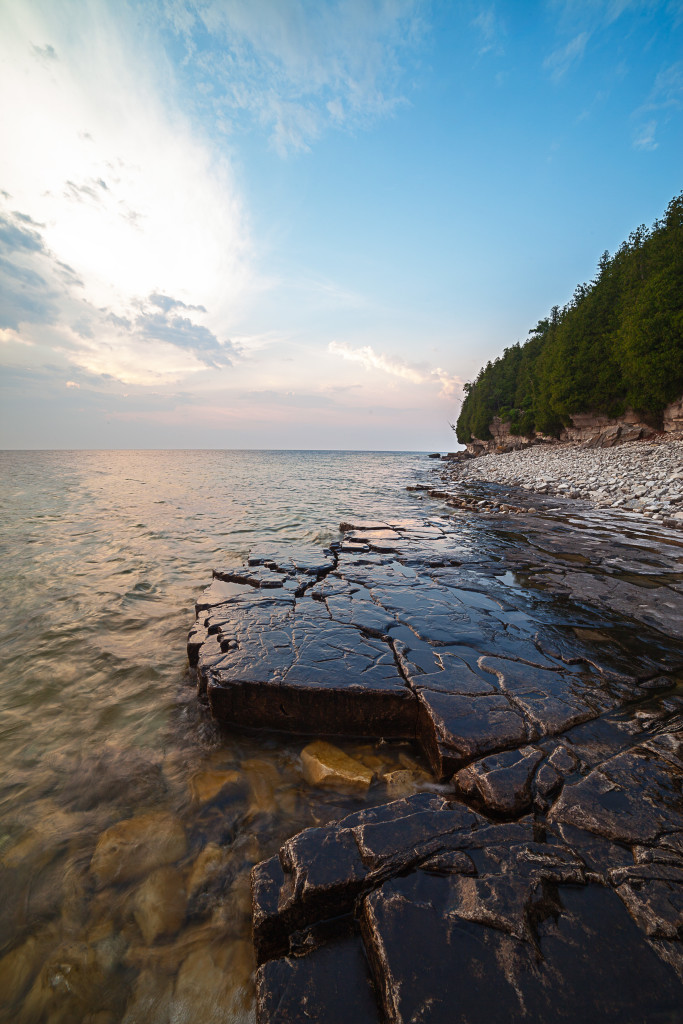Great Lakes Islands Added to Green Bay National Wildlife Refuge
- Share
- Tweet
- Pin
- Share

The U.S. Fish and Wildlife Service and The Nature Conservancy announced the expansion of the Green Bay National Wildlife Refuge to include most of St. Martin Island and all of Rocky Island in Lake Michigan, adding another 1,290 acres to the 330-acre refuge. The islands are part of the Grand Traverse chain, which extends from Wisconsin’s Door Peninsula to Michigan’s Garden Peninsula.
“It’s gratifying to see our shared conservation missions coming together to protect these unique Great Lakes islands,” said Tom Melius, Midwest regional director of the U.S. Fish and Wildlife Service. “We couldn’t do this without a common vision among all the partners.”
“We are happy to have been part of protecting St. Martin and Rocky islands and are excited they will have a home in the National Wildlife Refuge System and be managed for the benefit of migratory birds, fish and other wildlife,” said Mary Jean Huston, director of The Nature Conservancy in Wisconsin.
Green Bay National Wildlife Refuge was established in 1912 as habitat for migratory birds and consists of the 325-acre Plum Island and the smaller Pilot and Hog Islands. With the addition of St. Martin and Rocky Islands, the refuge will increase by five times its original size.
Along with the other islands in the Grand Traverse chain, St. Martin Island is part of the Niagara Escarpment and has significant bluffs, which have rare native snails and plants associated with them. In addition to the bluffs, the island also supports forests, wetlands and an extensive cobblestone beach.
Both St. Martin and Rocky islands, along with others in the Green Bay National Wildlife Refuge, provide important stopover habitat for birds that migrate through the Great Lakes each spring and fall. On St. Martin, 43 neo-tropical migrant birds and 26 species of greatest conservation need in Michigan use the island either during migration or the breeding season or both.
These islands act as stepping stones for a wide host of migrating birds and other wildlife as they cross Lake Michigan. During their long journeys, migratory animals need places along the way to stop, eat, rest and sometimes seek shelter from storms. More than 400 plant species, including the dwarf lake iris, a federally-threatened species, have been found on the island. The broad shallow “flats” offshore of St. Martin Island are likely to be a prime area for fish spawning and reproduction.
St. Martin Island is located about five miles from Washington and Rock islands at the tip of the Door Peninsula. Rocky Island is located approximately two miles off the Garden Peninsula.
This acquisition adds to the diversity of protected island habitat that includes: Spider, Gravel, Hog, Plum and Pilot islands (managed by the U.S. Fish and Wildlife Service), Gull and Little Gull islands (managed by the Michigan Nature Association), Rock Island (managed by the Wisconsin Department of Natural Resources), Poverty Island (to be managed by the U.S. Fish and Wildlife Service), land on Detroit and Washington Islands (protected by the Door County Land Trust) and Summer Island (more than half of the island is managed by the State of Michigan).
Click here to learn more about Green Bay National Wildlife Refuge.


